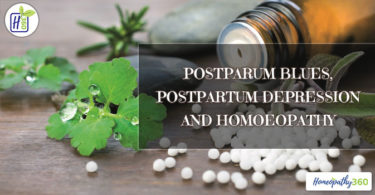ABSTRACT:
The troublesome effect of many conventional medications indicated during pregnancy have prompted some women to turn the homoeopathy, as a safe and effective treatment option for pregnancy related symptoms. Pregnancy is the term used to describe the period in which a fetus develops inside the woman’s womb or uterus. Pregnancy usually lasts about 40 weeks, or just over 9 months, as measured from the last menstrual period to delivery. Homoeopathy is a safe for women to use during pregnancy and postnatally, including during breastfeeding.it is gentle yet effective system of medicine and the medicines are highly diluted and well-proved and are not chemical drugs.so, they cannot harm the baby. This article will focus on the common problems and complications that could occur during pregnancy.
KEYWORDS:
pregnancy, trimester, stags, signs, complications, management, homoeopathic medicines
INTRODUCTION:
pregnancy is the state of fertilization and development of one or more offspring within a woman’s uterus. After the fertilization of egg by the sperm it gets implanted in the lining of the uterus, it develops into the placenta and embryo & later in to the fetus.
DEFINITION:
Pregnancy is the period of gestation from the fertilization of an egg, through development of a fetus, and ending at birth or conception to birth.
DURATION:
40 weeks or 280 days or 9 months…calculated from the first day of last menstrual period.
STAGES OF PREGNANCY:
A pregnancy is divided into 3 trimesters:
1). First Trimester:
• From 1 to 12 weeks
A lot happens during these first three months. body undergoes many changes. Hormonal changes effect almost every organ and system of the body
SUBJECTIVE SYMPTOMS:
Amenorrhoea, morning sickness (nausea and vomiting), increase frequency of micturition, breast discomfort, fatigue or extreme tiredness, mood swings, upset stomach, headache, heartburn.
OBJECTIVE SIGNS:
Breast changes – valuable only in primigravidae and evident between 6-8 weeks.
There is general Enlargement with prominence of vein and increased pigmentation, forming primary and secondary areolae. The nipple also become more prominent, erectile and turgescent.
Pelvic changes also seen.
2). Second Trimester:
• From 13 to 28 weeks
The symptoms like nausea, vomiting, fatigue and frequency of micturition going away. Abdomen will expand as the baby continues to grow. Before this trimester is over, the movement of the baby can be feelssssssss.
NEW FEATURES THAT APPEAR ARE;
Quickening = Perception of the active fetal movements in the uterus by the women; Progressive enlargement of lower abdomen; Stretch mark on abdomen, breast, thigh or buttock; Numb or tingling sensation in hand, itching on abdomen, palms and sole of the feet; Chloasma (pigmentation over the forehead and cheek) may appear; Breast changes.
ON ABDOMINAL EXAMINATION;
Inspection = Linea nigra & striae marks present.
Palpation = Increased fundal height, Uterus feels soft and elastic, Braxton-Hicks contractions, Palpation of fetal parts, Active fetal movements, External ballottement.
Auscultation = Fetal heart sound (detected bet.18-20 weeks) (110-160 beats/min), Uterine souffle, Fetal souffle.
3)Third Trimester:
• From 29 to 40 weeks
Find breathing difficulty and notice have to go to bathroom more often. This because the baby is getting bigger and it’s putting more pressure on organs.
SYMPTOMS:
Shortness of breath, Amenorrhoea persists, Enlargement of the abdomen, Lightening, increase frequency of micturition, Trouble sleeping, Heartburn, easily felt fetal movements and increase fundal height.
COMPLICATIONS OF PREGNANCY:
1)In 1st trimester:
Vaginal bleeding (heavy bleeding could be sign of miscarriage or ectopic pregnancy),
Hyperemesis gravidarum,
High fever,
Vaginal discharge and itching (may be signs of any infections),
Pain and burning during urination (can be signs of bladder or urinary tract infections).
2)In 2nd trimester:
Bleeding,
Preterm labour (labour occurs before the 38th week of pregnancy),
Preeclampsia,
Injury,
Preterm premature rupture of membrane,
Cervical incompetence.
3)In 3rd trimester:
Gestational diabetes mellitus,
Hypertension,
Intrauterine growth restriction (IUGR),
Preeclampsia and Eclampsia,
A loss of pregnancy or miscarriage,
Preterm or post-term labour,
Placenta problems,
Malpresentation,
Infections.
EXAMINATION:
Speculum examination,
Vaginal examination,
General examination of abdomen,
•Inspection, Palpation, Auscultation
Examination of uterus and the fetus
INVESTIGATION:
1)In the 1st trimester:
•Blood test=to detect any infections or anaemia
•Chorionic villus sampling=check for any genetic & chromosomal conditions.
•Ultrasound scan = to check any fetal abnormalities
•Transvaginal scan=to examines the cervix, fallopian tubes
•Urine tests=to detecting gestational diabetes.
2)In 2nd trimester:
•Amniocentesis
•Ultrasound = to check baby’s growth
•Foetal doppler ultrasound = used to measure foetus health
3)In 3rd trimester:
•Group B streptococcus test = to detect any infection
•Electronic foetal heart monitoring
•Biophysical profile
•Nonstress test = done in high risk pregnancies
GENERAL MANAGEMENT:
Routine prenatal care and check-up,
Eat a nutritious healthy diet,
Closely monitor the progression of the pregnancy,
Gain a proper amount of weight and avoid any risky substances and medications,
Routine care during pregnancy,
Educate the patient about normal maternal changes during pregnancy
HOMOEOPATHIC MANAGEMENT:
1)ACONITE:
•This remedy is often indicated for relief of soreness that comes from physical exertion, after labour and delivery and muscle strain during pregnancy.
•Fear and fright – Extreme fear experienced during pregnancy.
•Contractions feel violent and intense, producing a state of great fear and anxiety.
•Restless, agitated and fearful that they might die.
•Aggravation – evening and at night; Amelioration – in open air.
2)ARNICA:
•Feeling sore, lame and bruised during labour and over affected parts.
•They may not want to be touched.
•Relieves soft tissue damage (perineum 7 abdomen) following birth.
•Reduces swelling and bruising and risk of infection and promote healing and controls haemorrhage.
•Useful to reduce swelling of baby’s head after birth.
•The patient remains unconscious; when spoken to, answer correctly and completely but immediately unconsciousness and delirium return.
•Low muttering delirium and stuporous condition.
•Aggravation – from least touch, motion, rest; Amelioration – from lying down.
3)CAULOPHYLLUM:
•This remedy may be helpful to women with weak muscle tone in the uterus.
•Can be used at term to help strengthen and tone the uterus and prepare and soften the cervix prior to birth.
•Also, helpful if labour pains fail to dilate the cervix and contractions become irregular, short, and spasmodic.
•The women may feel erratic pains like sticking needles in the cervix, or episodes of contracting pain and she typically feels nervous, shaky, and trembling.
•Passive type of haemorrhage
•Aggravation – in open air, by coffee; Amelioration – by emission of flatus.
4)PULSATILLA:
•This remedy is often helpful at times of strong hormonal changes, especially to women who are moody and emotional, and want a lot of affection and attention.
•They often crave desserts or butter and may overeat, which can lead to indigestion and nausea, or excessive weight pain.
•During labour this patient wants doors and windows open.
•Useful in retained placenta, postpartum haemorrhage, etc..
•Patient is mild, gentle in character. Yielding disposition and timid.
•Aggravation – warm room, when allowing feet to hang down, rich and fatty food; Amelioration – by consolation, cold , open air after a good cry.
5)CIMICIFUGA:
•This remedy can be useful in the women who are nervous and talkative, with a tendency to feel fearful and gloomy during pregnancy.
•They may become overagitated and a fear a miscarriage – sometimes having pain like labour pain too early, or pains that shoot from hip to hip and down the thighs.
•It helps to produce coordinated contractions while allaying fear and anxiety.
•Incredibly useful for women who have a painful or traumatic memory of a past pregnancy, birth, miscarriage etc…
6)SEPIA:
•Women who are tired, dragged out irritable during pregnancy (feeling overburdened by demands of family members, or with little enthusiasm of pregnancy) may benefit from this remedy.
•Prolapse of uterus and Weakness and bearing down sensation in pregnancy.
•Poor circulation, morning sickness, constipation, complete absence of sexual desire, chilly are other indications.
•Mentally patient’s very apathetic and indifferent.
•Must cross the to prevent protrusion of parts.
7)NUX VOMICA:
•This remedy can be useful for indigestion, heartburn, stomach pain, and constipation during pregnancy.
•A woman needs this remedy is usually irritable, easily angered, offended, impatient and chilly.
•For contractions felt in the back that extend to the buttocks and thighs.
•No pressure can be tolerated on the back and pain is worse from pressure.
•Aggravation – after over-eating, morning; Amelioration – at rest, lying down.
8)CARBO VEGETABILIS:
•This remedy can be helpful a woman to who feels weak and faint during pregnancy, with poor circulation, a general feeling of coldness, and a craving for fresh or moving air.
•A woman who is deeply tired from overwork, many pregnancies close together, or a previous illness may regain some strength with carbo veg.
•Exhausted vitality from loss of vital fluid.
•Want to be fanned rapidly and from a close distance.
•Slowness in thought and weak memory, dislike darkness.
•Aggravation – in the evening and open air, from cold; Amelioration – by fanning.
OTHER MEDICINES ARE;
Ferrum phosphoricum
Ferrum metallicum
Gelsemium
Bellis pernnis
CONCLUSION:
Here we conclude with the statement that beside being safe, homoeopathy is a very gentle and effective field of medicine which help to strengthen the women both physically and psychologically and in treating various common problems of pregnancy as it is given in highly diluted form and having no any toxic or side effects.





